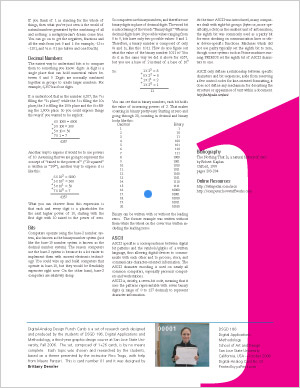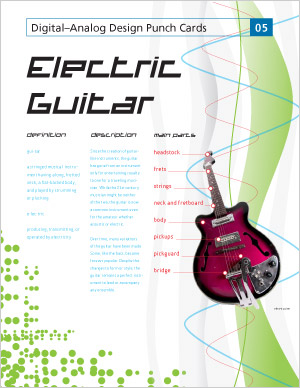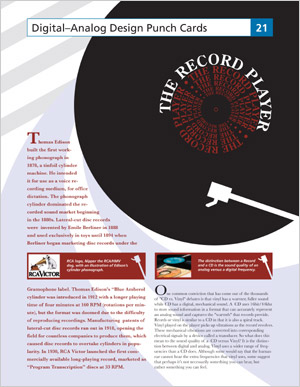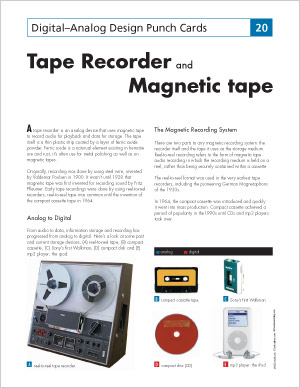01_binary
Punch card n. 01 (front). CMYK-color process (offset) 8.5 x 11. Card design: Brittany Dennler.

01_binary2
Punch card n. 01 (back). CMYK-color process (offset) 8.5 x 11. Card design: Brittany Dennler.

05_guitar
Punch card n. 05 (front). CMYK-color process (offset) 8.5 x 11. Card design: Sarah Alberg.

05_guitar2
Punch card n. 05 (back). CMYK-color process (offset) 8.5 x 11. Card design: Sarah Alberg.

21_phonograph
Punch Card n. 05 (front). CMYK-color process (offset) 8.5 x 11. Card design: Jenevie Gonzalez.

21_phonograph2
Punch Card n. 05 (back). CMYK-color process (offset) 8.5 x 11. Card design: Jenevie Gonzalez.

Digital-Analog
Digital-Analog Punch Cards. Digital Applications Methodology. San Jose State University.
26 letter size cards. The "digital" in relation to both the production (designer) and the use (reader) of design objects. What is digital compared to analog. Some entities are distributed both in digital and analog formats. A newspaper (the physical, paper object) is made digitally but is in essence an analog object, like the book, while the same newspaper's website is essentially a digital object.
Threads and kinship of design objects: where do objects come from, do they have"parents" and will they produce any "children". Why objects are the way they are now. Objects for reading: books, magazines, posters. Objects for taking pictures: pin-hole camera, film, video, pixel based recording devices. Objects for writing (writing machines): typewriter, electric typewriter, computer keyboard
2006

